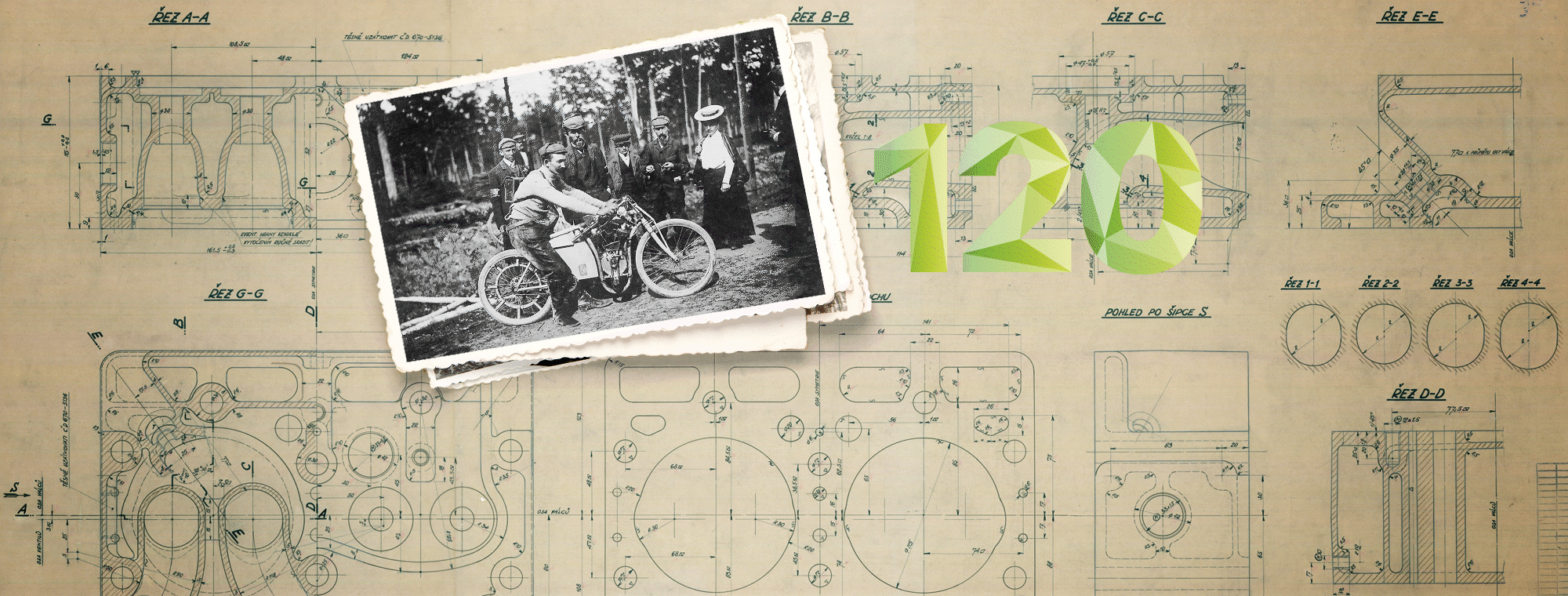In addition to the complete selection of images accompanying this press release, the ŠKODA Storyboard also offers a 32-page brochure and a comprehensive selection of articles and features on various topics from 120 years of ŠKODA Motorsport.
The ŠKODA Motorsport works team had achieved numerous strong results on the international rally tracks with the ŠKODA OCTAVIA WRC, giving them the expertise they needed to develop and field more vehicles in the top category. In the first half of 2002, rumours were circulating that the ŠKODA Motorsport works team was working on a new model – the ŠKODA FABIA WRC. The then ŠKODA AUTO CEO Vratislav Kulhánek finally commented on these speculations at the Cyprus Rally. The question was no longer whether, but when and where the new rally vehicle would be making its debut.
At the press conference for the start of the Monte Carlo Rally 2003, the ŠKODA Motorsport works team also officially confirmed the development of the new vehicle, and the ŠKODA FABIA WRC was unveiled in Geneva in early March 2003. Extensive tests were carried out over the following months; the then number 1 and number 2 of the works team, Didier Auriol and Toni Gardemeister, as well as the test drivers Kenneth Eriksson and Matthias Kahle all took the wheel.
The FABIA WRC was based on the first-generation ŠKODA FABIA RS, a five-door hatchback with a 130 hp TDI engine. For the racing car’s homologation, the Czech car manufacturer first had to build 2,500 units of the FABIA RS. After a three-day inspection by FIA officials in Mladá Boleslav, it was finally homologated on 1 July 2003 ‑ now, nothing stood in the way of its first competitive appearance.
Due to the regulations in force at the time, the ŠKODA FABIA WRC – unlike its series-production counterpart – was powered by a turbocharged, water-cooled four-cylinder petrol engine with a displacement of two litres. Its output was 221 kW (300 hp), with a maximum torque of 600 Nm. The power was transmitted to all four wheels via a sequential six-speed gearbox and three active differentials. The McPherson suspension included wishbones at the front and two wishbones and one trailing arm at the rear, while disc brakes on every wheel ensured reliable deceleration. Due to the regulations, ŠKODA also installed a modified front bumper in the series-production FABIA RS for homologation purposes, increasing the overall length of the vehicle beyond the four-metre mark as was required.
The ŠKODA FABIA WRC made its debut in the World Rally Championship at the Germany Rally in 2003, followed shortly afterwards by the demanding Finland Rally. Initially, some issues with the vehicle as well as bad luck on several special stages resulted in a disappointing start for the FABIA. The car went on to celebrate a number of major successes towards the end of its debut season. The drivers included Didier Auriol, Toni Gardemeister, Armin Schwarz, Jani Paasonen, Roman Kresta and Colin McRae. The Scottish rally legend had his sights set on second place at the 2005 Australia Rally before he was disqualified through no fault of his own.
At the beginning of November 2005, ŠKODA announced it would no longer be competing in the WRC. The factory team was then replaced by two private teams who would continue to receive support from the brand and be supplied with vehicles accordingly. In the fourth round of the series, a young Jan Kopecký clinched the best world championship result ever for the ŠKODA FABIA WRC, finishing a spectacular fifth at the Rally Catalunya – a success that he would later build on in Germany.
During the season, Kopecký gained experience in a total of ten WRC rounds, which he put to good use behind the wheel of other ŠKODA rally cars in subsequent seasons. In 2006, he achieved the fastest time in a World Championship special stage on three occasions. Kopecký also helped to raise the ŠKODA FABIA WRC’s profile internationally, and Formula 1 driver and rally driver Robert Kubica also drove the car in numerous tests. Two-time rally world champion Carlos Sainz borrowed the FABIA WRC for the final round of the Spanish championship and left the competition far behind.
24 units of the ŠKODA FABIA WRC were produced in total. Its career ended with the introduction of the second‑generation FABIA, which wrote another successful chapter in the Czech manufacturer’s motorsport history.
















